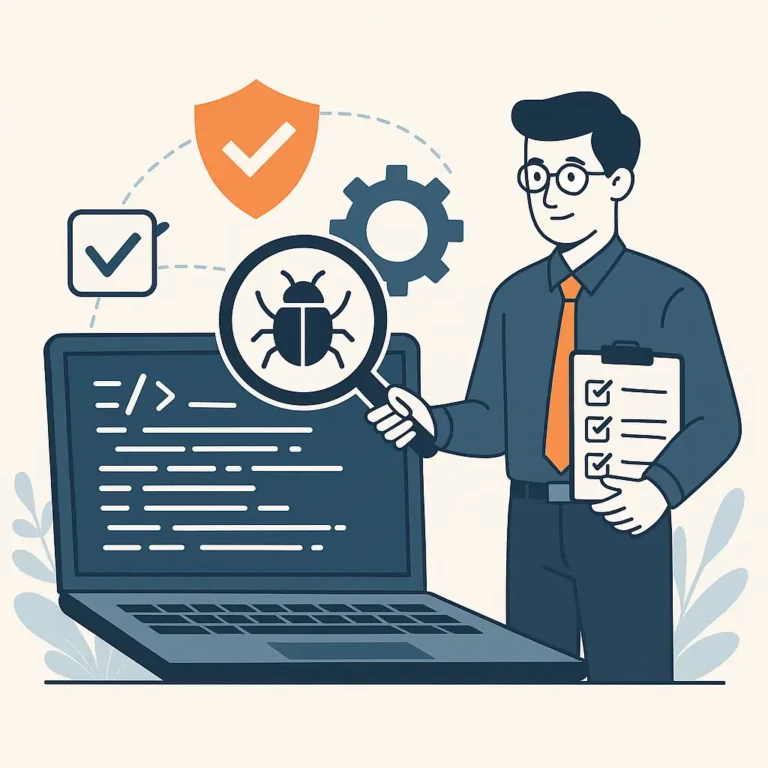Why Testing Matters from Day One
Testing is not a final step—it’s a continuous process that begins the moment development starts. Well-planned testing helps identify issues early, enhance performance, and minimize delays. It ensures every feature works as expected, meets requirements, and delivers a smooth user experience.
Effective testing goes beyond finding bugs. It verifies functionality, security, usability, and speed across the entire project lifecycle. That’s why testing is integrated into every sprint—not left to the end.
Our Approach to Software Testing
Testing is integrated into every phase of the project—not just added at the end. Each feature goes through a cycle of test planning, execution, and refinement. This helps us detect problems early, maintain consistent quality, and keep development moving forward.
We employ both manual and automated testing techniques to test all levels of your application thoroughly. From individual components to complete systems, everything is thoroughly tested to perform under real-world conditions.
Our team also collaborates closely with design and development to ensure tests reflect real user behavior—not just technical scenarios.
Full-Cycle Testing for Reliable Results
We test early, test often, and test smart. Each phase of development includes structured testing checkpoints, ensuring that bugs, performance issues, and usability concerns are identified and addressed before they cause delays or impact the project.
Our testing covers:
- Unit testing: Verifies each function or module in isolation
- Integration testing: Ensures different components work together
- System testing: Checks the full application from end to end
- User acceptance testing (UAT): Validates the product against real-world expectations
- Regression testing: Confirms that new features don’t break existing functionality
By combining automated tools with hands-on validation, we deliver software that’s ready for users—fast, stable, and stress-tested.
Ready to Launch with Confidence?
Testing is the key to delivering software that performs—not just in theory, but in the real world. With structured, full-cycle testing, we help you reduce risk, speed up delivery, and exceed user expectations.
Let’s make your next launch smoother, faster, and more reliable. Get in touch to see how our testing expertise can support your project from day one.
FAQ About Software Testing in Project Management
Early and continuous testing helps catch issues before they grow. It improves quality, speeds up delivery, and reduces the risk of bugs or delays near launch.
We use unit, integration, system, user acceptance (UAT), regression, and both manual and automated testing—each addressing a specific level of the application.
We focus on usability testing to understand how real users interact with your product. Their feedback helps us refine design and functionality for better results.
Yes. Whether it’s a mobile app, web platform, or enterprise system, we tailor the testing scope and tools to align with your project’s goals and timeline.
We utilize tools such as Selenium, Cypress, and Jest to automate functional and regression testing. These tools help us catch issues quickly and maintain quality over time.
